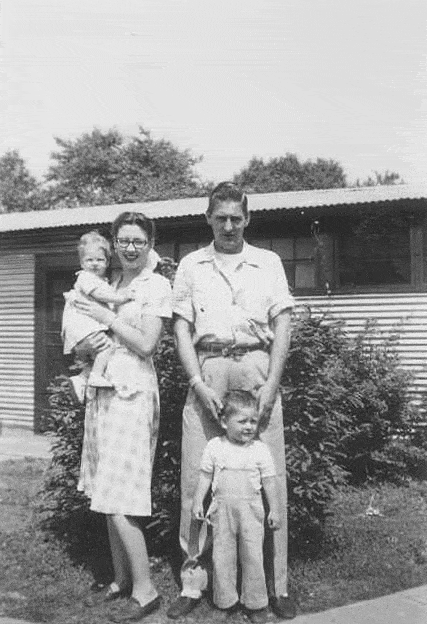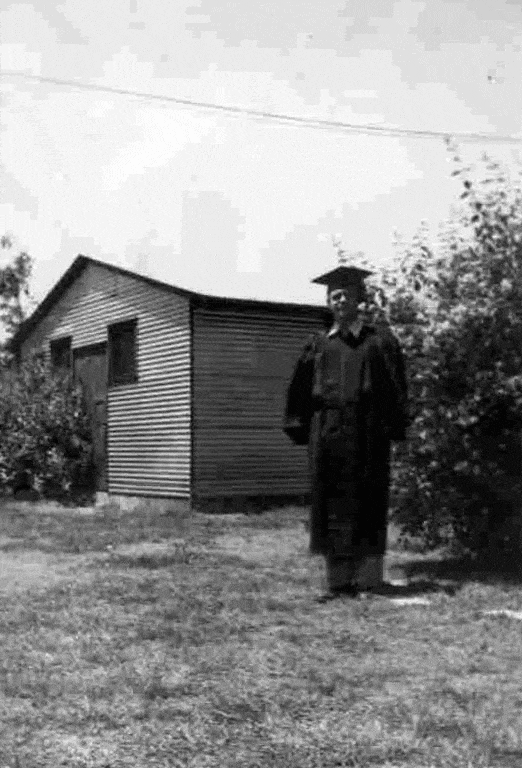Student Life in Tin City

The Campus Court Apartments, known as “Tin City,” were where WWII veterans and their families lived after the war. Due to the G.I. Bill, there was an influx of students at colleges across the nation, the University of Evansville being one of them. There are lots of written records about the lives of the veterans as students at the university, but not much can be said about the archaeology of these students at the Tin City site. There are little to no artifacts that can be traced back to belonging or being used by a male. But, even though it is a bit disappointing to not have any physical evidence from the ground, the written records do a very exemplary job of showing what day to day life was for the students who lived in these apartments.
The campus was made up of both regular students and veterans, but everyone was mixed together and very friendly. A very large majority of the veterans were male, since there were little to no women serving in the army in the 1940s. There was also the Veteran’s Counseling Agency, which veterans went to when things got hectic and they needed someone to talk to. They did just come back from a war, so there was bound to be some psychological after-effects present in some of the veterans.
Most classes were held in the Science and Engineering Building, which is now called Olmsted and is an administration building. There was a vet’s lounge that was like game room. In there, the men could play cards and ping pong and get some food at the snack bar. There was also a recreation lounge, similar to the vet’s lounge, that included pig pong tables and piano among other commodities.
Student life was extremely busy. Veteran’s using the G.I. Bill to go to college had to do well in classes and take approved courses to keep getting the money to be able to attend school. While taking classes, the student also had off campus jobs, like working at gas stations, etc. Most of students worked until late into the night, because that was the time that they were not in class. In addition to class and jobs, some were involved in campus clubs and sports.

The university offered basketball and football among other sports. The Crescent, the student newspaper, now a magazine, was up and running and students had the chance to work on that. Some men even joined the fraternities. One other thing that students also had to take into account was spending time with their family. Most veterans had a wife and children that were waiting for them back at the apartments. Adding up the time spent on classes, a job, extracurriculars, and family meant that the veterans were booked all day every day.
Students were still social, even though they were very busy. Many spent lots of their time studying together. Families would visit with each other, either by going to one another’s house or by spending time in the front yard, where all of the socializing was done, usually late at night since that is when the men would usually get home from their jobs.
There was another housing unit on campus called Parkside Hall. It was very similar to Tin City, the only difference being that it was on the other side of campus. Even though some students lived on opposite sides of campus, they still made the walk to visit each other. Some families had cars, but most preferred to walk since it was more convenient. Most walked to Wessleman’s grocery store, which thrived due to all the business in the area from the families. The veterans and other students had to buy all their own food, since it was not provided by the school. Other necessities, like books and supplies, were bought for the veterans under the G.I. Bill.
Tin City helps us to understand what campus was like for the veterans and their families in the past. The records that are kept on the men, and the archaeological data that can be found that pertains to the women and children who lived there paints a clear picture of how these families lived from day to day. Even though there is a lot that is known about the people who once lived here, there is still so much more to be discovered about the history of this spot, whether it is above or below the ground.
Images
Image 1: Diana Alane, Jene, Bob, and Dennis Duvall, Campus Apartments 1949.
Image 2: Gene Bachman graduates, June 2, 1952.
References
Bachman. Personal interview by Muriel Anderson.
Duvall. Personal Interview by Muriel Anderson.
Kaiser, A. (2005). “Rediscovering Tin City,” UE Magazine 100, 2: 4-5.
“Veterans” Linc 1947
